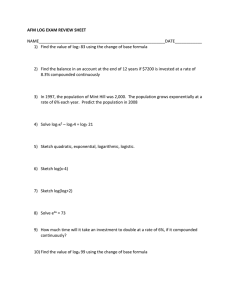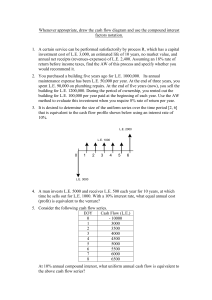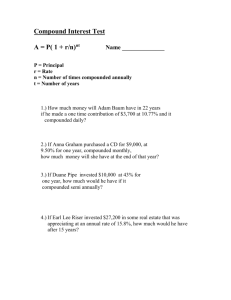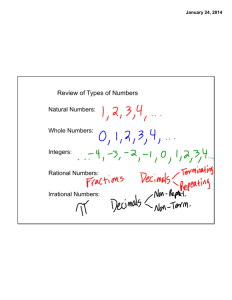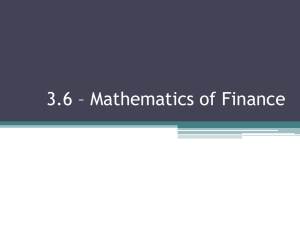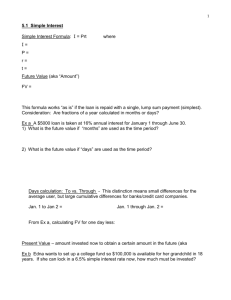Notes 7.2 part 2 - Mercer Island School District
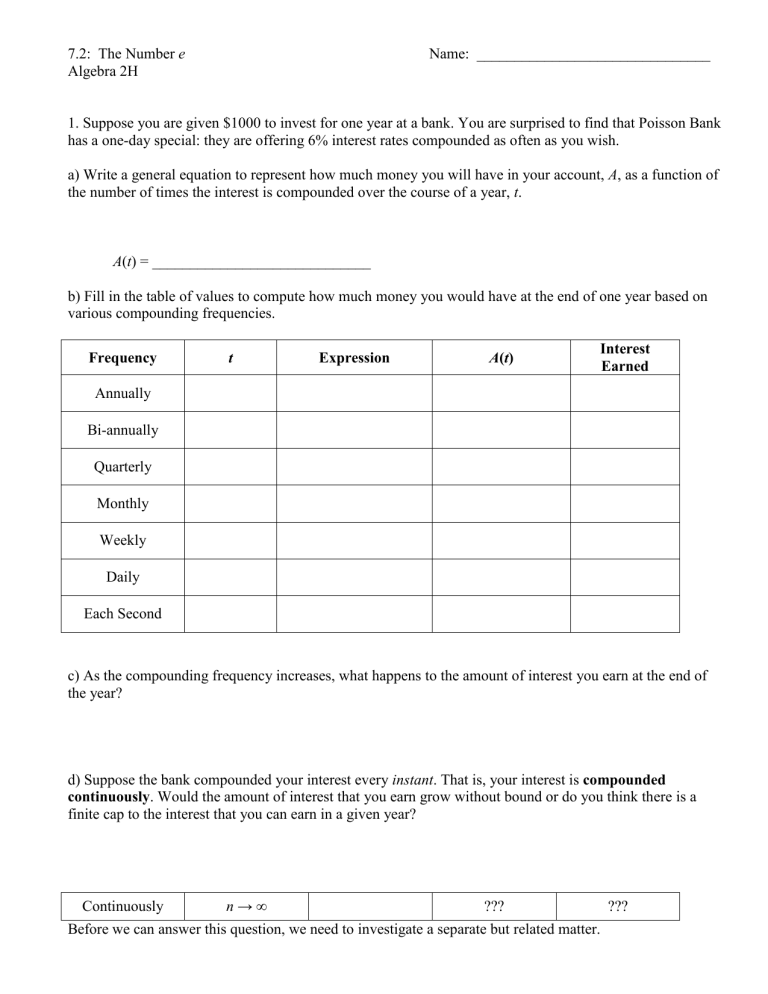
7.2: The Number e
Algebra 2H
Name: _______________________________
1. Suppose you are given $1000 to invest for one year at a bank. You are surprised to find that Poisson Bank has a one-day special: they are offering 6% interest rates compounded as often as you wish. a) Write a general equation to represent how much money you will have in your account, A , as a function of the number of times the interest is compounded over the course of a year, t .
A ( t ) = _____________________________ b) Fill in the table of values to compute how much money you would have at the end of one year based on various compounding frequencies.
Frequency t Expression A(t)
Interest
Earned
Annually
Bi-annually
Quarterly
Monthly
Weekly
Daily
Each Second c) As the compounding frequency increases, what happens to the amount of interest you earn at the end of the year? d) Suppose the bank compounded your interest every instant . That is, your interest is compounded continuously . Would the amount of interest that you earn grow without bound or do you think there is a finite cap to the interest that you can earn in a given year?
Continuously n → ∞ ??? ???
Before we can answer this question, we need to investigate a separate but related matter.
2. Suppose we have the following function: ( )
1
1 n
n
. a) As the values of n approach infinity, what do you think the function values will approach? Infinity?
Perhaps a finite value? b) Using your calculator, fill in the table of values below:
n Value
1
2
5
10
100
1,000
10,000
100,000
1,000,000
1,000,000,000 c) Based on your observations, make a conjecture about the value of f ( n ) as n → ∞.
The Number e d) Use your calculator to find a decimal approximation for e to three places. e ≈ _____________
The exponential function ( )
e x
, whose base is the number e , occurs with such frequency in applications that it is usually referred to as the exponential function. Many exponential equations will be written with base e .
Now let’s revisit the question of how much interest we can earn in a year if the interest is compounded continuously.
3. It can be shown algebraically that as n → ∞,
1
r
n
n e r
. Using this fact, find the amount you will have in your account at the end of the year if the interest is compounded continuously.
Continuously Compounded Interest
4. The Thompson twins each received $5000 to deposit into a bank account. Tommy deposited his money into an account that compounds interest continuously at an annual rate of 4%. Terry deposited his money into an account that compounds interest quarterly at an annual rate of 4%. Assuming no other deposits or withdrawals are made, how much more interest will Tommy have earned than Terry after 5 years?
5. In 1626, Peter Minuit convinced the Wappinger Indians to sell him Manhattan Island for $24. If the
Native Americans had put the $24 into a bank account paying 5% annual interest, how much would the investment be worth in the year 2014 if interest were compounded a) monthly b) continuously
6. Which of the following statements are true?
(a) As the number of compounding periods increases on a fixed investment, the amount of money in the account over a fixed interval of time wil increase without bound.
(b) The functions
x and g x
3 x have the same graph.
(c) e
2.718
(d) The functions x and
x have the same graph.
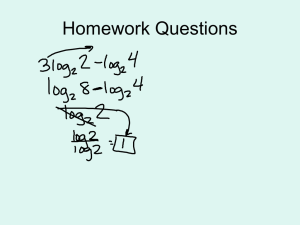
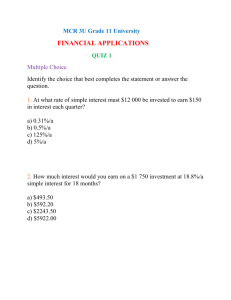
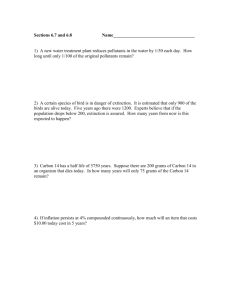
![Practice Quiz Compound Interest [with answers]](http://s3.studylib.net/store/data/008331665_1-e5f9ad7c540d78db3115f167e25be91a-300x300.png)
